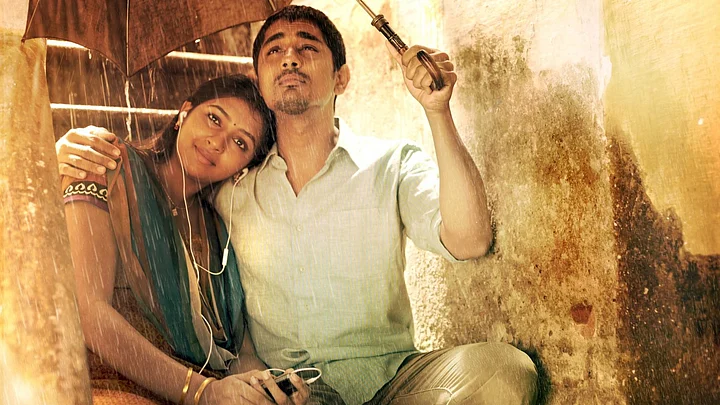Time was when most of India understood Tamil cinema as the domain of dark-skinned, moustached heroes with ridiculous accents. It formed the prototype of the South Indian male.
However, now, it appears Shah Rukh Khan may be the only one who clings to the notion of Tamil cowboy heroes who use nonexistent words such as “rascalla”. But then, his portrayal of a Tamilian could rival that of comedian Mehmood in its outlandishness, so his opinion is best discounted.
Bollywood, for some reason, has recently turned to Kollywood for inspiration. For a good while, both Tamil and Hindi cinema relied on the Malayalam film industry when directors needed solid storylines for remakes.
But, over the last few years, some of the biggest hits Bollywood has produced are remakes of Tamil originals. Ghajini broke several box-office records, only to be outdone by Singham, which even spawned a sequel. Thuppakki came to Bollywood as Holiday.
The Sudden Rise of the Tamilian Non-Mainstream
Even as commercial hits in Tamil are being lapped up by the likes of Aamir Khan, Ajay Devgn and Akshay Kumar, a new movement seems to have started in Kollywood itself.
Suddenly, low-budget, non-mainstream films with young, often unknown, actors, are being released to both critical acclaim and commercial success.
Aaranya Kaandam (2010), Jigarthanda (2014), and Kaakka Muttai (2015) have all won National Awards, and subsequently found backing for release in theatres. Aadukalam, the second film of director Vetrimaran, swept the National Awards a few years ago.
Mani Ratnam and Kamal Haasan: Two Sides of a Successful Story
This is not the first time that there has been a paradigm shift in Tamil cinema. In the Eighties, a young man with the Midas touch managed, for the first time, to combine brilliant story lines with the elements of commercial cinema, turning stars into actors, and appealing simultaneously to the masses and the critics.
Mani Ratnam directed films that were not just hits, but enduring pieces of art, often encapsulating the mood of a time, the reality of a place, the inner lives of families. Dubbed Hindi versions were successful, despite the inherent logical fallacies that were introduced by translation – for instance, the poignancy in Roja centres on a girl who is lost and alone in a land whose language she doesn’t know, and on the bonds she forms with the only two people who speak her language.
Sadly, Mani Ratnam was the lone spark in an industry that was producing tired films with hackneyed storylines. Kamal Haasan was making interesting films too, films that would one day be appreciated, but which were too far ahead of their time when they released to be successful at the box office.
Riding the Local Trend – Unafraid, Unabashed
The new trend in Tamil cinema, though, does not have to do with one or two men, but a crop of young directors who are willing to take risks with their stories, and producers who are willing to hedge their bets on unproven talent. It also has to do with a seemingly drastic change in the audience’s tastes. Yes, a Rajinikanth or Vijay or Ajith film will do well irrespective, at the box office, just as a Salman Khan film will. But good cinema and commercially successful cinema, and the audience for each, are not mutually exclusive.
Perhaps some of this is due to the increasing local flavour in Tamil films. Several films about violence in interior Tamil Nadu, such as Veyyil (2006), Paruthiveeran (2007), and Subramaniyapuram (2008), have been received well. In fact, they may have set off a trend which takes directors and writers closer to their own roots, looking for stories that are honest to their geography – not unauthorised adaptations of Chinese, Japanese, and Iranian films that the directors have spotted at film festivals.
Nor formulaic feature films that need to be bolstered by a star.
More Substance than Spectacle – the Dawn of a New Era?
A couple of years later, a comedy, Thamizh Padam (2010) spoofed the mores and clichés of Tamil cinema over the last century, to the delight of audiences and the ire of the industry.
Since then, both directors and producers seem to have got bolder, as have the theatres, offering to the audience films like Jigarthanda and Soodhu Kavvum, which combine noir, action, and comedy.
Perhaps this is the beginning of an era which will see a series of offbeat films, more substance than spectacle.
(Nandini Krishnan is a writer, playwright, columnist, and stand-up comedienne. She tweets @k_nandini.)
